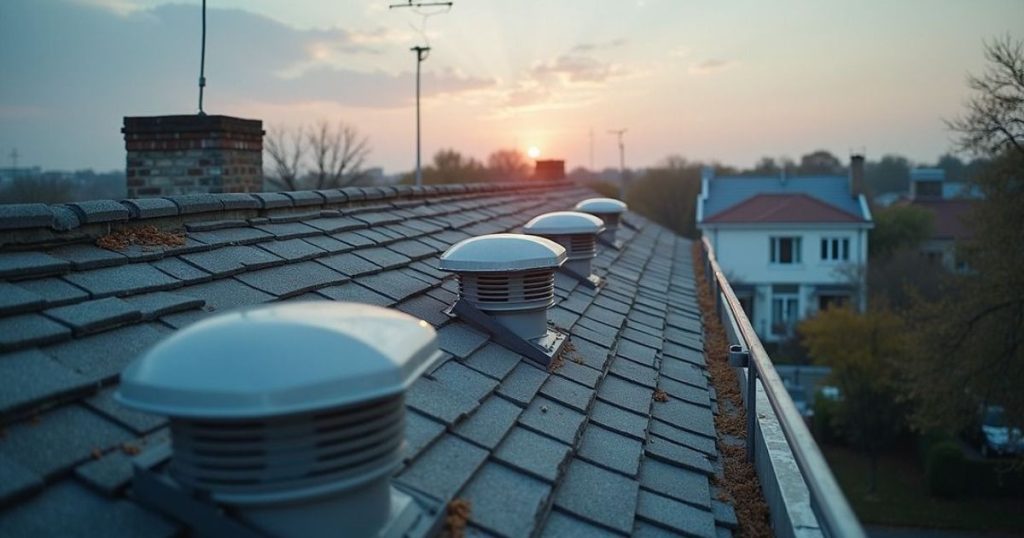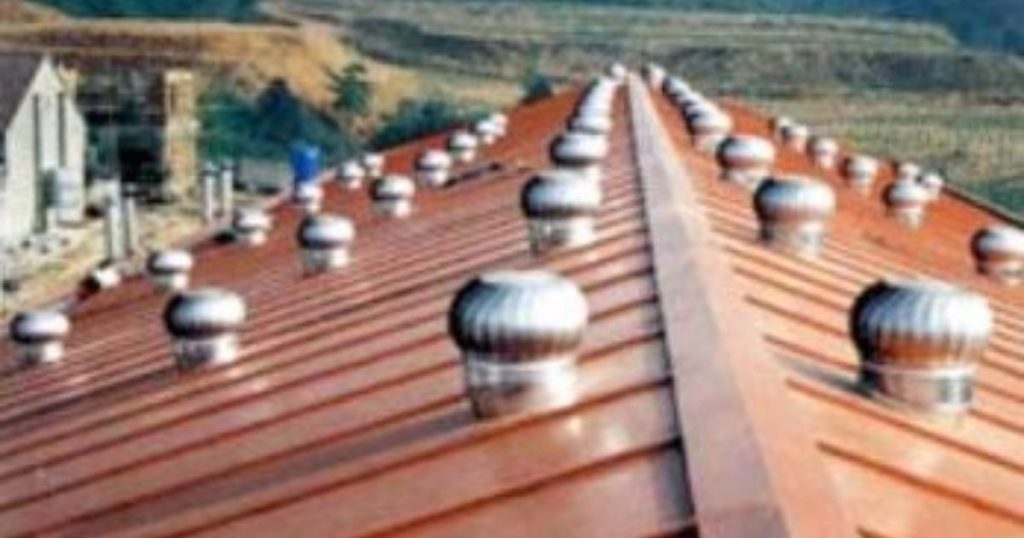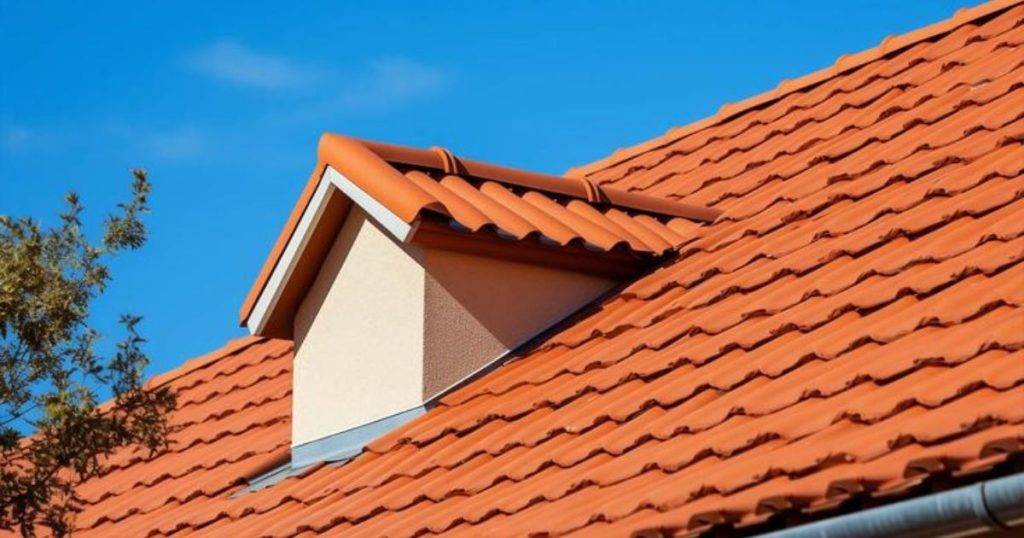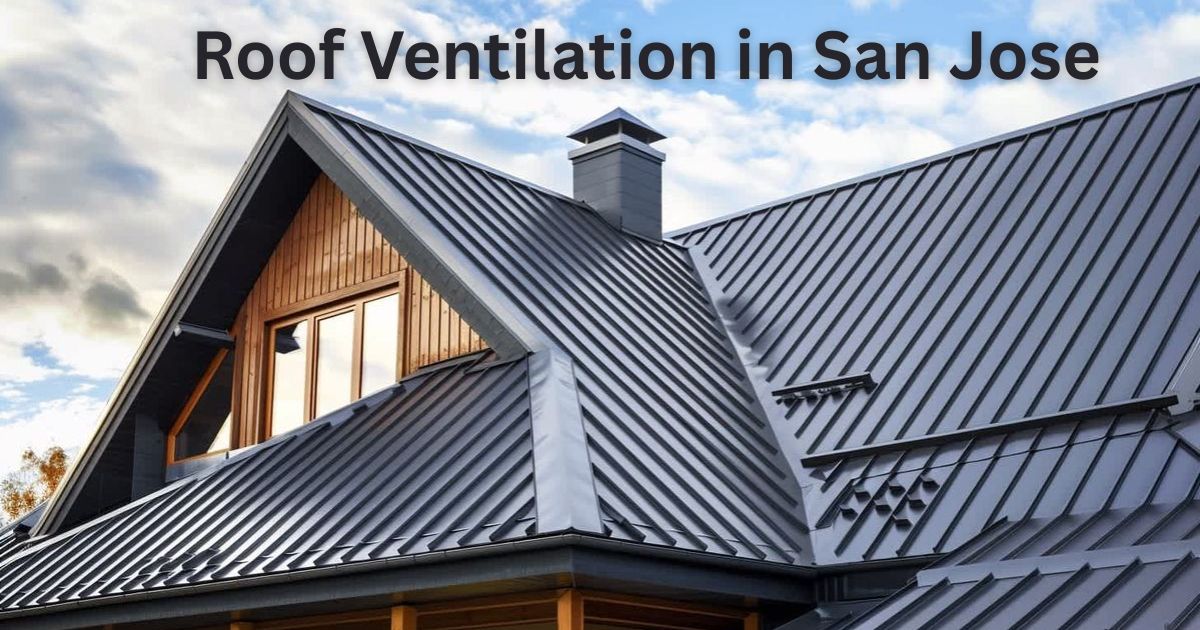Why Roof Ventilation Matters for San Jose Homes
Roofing venting San Jose plays a crucial role in maintaining a comfortable, energy-efficient home in California’s warm climate. Without proper airflow, attic ventilation San Jose can become a challenge, leading to attic heat buildup, higher cooling bills, and potential roof damage prevention issues. Efficient roofing ventilation systems allow fresh air to circulate while pushing hot, stale air out, protecting your roof’s structure and improving home energy efficiency San Jose.
In regions like San Jose, where temperatures often rise, having the right ventilation setup is essential for reducing moisture, preventing mold, and extending your roof’s lifespan. Simply put, proper roofing venting keeps your home cooler, safer, and more sustainable all year round.
Understanding Roof Ventilation Systems

What Is Roof Ventilation and How It Works
A roof ventilation system installation allows fresh air to enter and stale air to leave the attic. This airflow helps prevent vapor drive moisture buildup, which can lead to wood rot and mold and mildew prevention issues. In San Jose’s sunny climate, an efficient ventilation system prevents heat transfer from attic spaces into living areas, enhancing home cooling and air conditioning efficiency.
Types of Roof Ventilation Systems
Ridge Vents
Ridge vents are installed at the roof’s peak, allowing warm air to rise and exit efficiently. They are crucial for maintaining a steady air intake and exhaust balance across the roof.
Soffit Vents
Soffit vents are located under the eaves and let fresh, cool air flow into the attic. This improves roof and attic airflow and reduces roof deck condensation.
Gable Vents
These vents are positioned on the sides of the roof to allow cross-ventilation. They support attic airflow and cooling, especially in larger residential roofing systems.
Turbine and Power Vents
These mechanical vents pull hot air out more aggressively. However, they require regular maintenance to keep attic moisture control balanced.
Solar Roof Vents (Eco-friendly Option)
Solar-powered vents are part of energy-efficient roofing systems and reduce electricity use. They’re ideal for energy-efficient home improvement projects in San Jose’s sunny weather.
The 3 Green Steps for a Cooler, Durable, Earth-Friendly Home
Step 1 – Ventilation: Circulating Fresh Air Efficiently
Good attic ventilation in San Jose homes can reduce attic temperatures by up to 30°F. This helps improve attic temperature reduction, extend your roof’s lifespan, and enhance indoor air quality. Balanced airflow between intake and exhaust vents ensures continuous circulation.
Step 2 – Insulation: Regulating Indoor Temperature
Using attic insulation R-30 keeps indoor spaces cooler during hot months and warmer in winter. It also maintains ventilation and insulation balance, improving home energy efficiency in San Jose and reducing HVAC load.
Step 3 – Radiant Barrier: Reflecting Sunlight and Reducing Heat Gain
Installing a radiant barrier installation like LP TechShield Radiant Barrier reflects up to 97% of solar radiation. This minimizes heat transfer from attic, reducing cooling costs and protecting your roofing materials from premature wear.
Importance of Proper Attic Ventilation in San Jose
In San Jose’s climate, attics can reach over 140°F in summer. Without proper attic ventilation, trapped heat causes roof damage and structural issues. It also leads to roof deck condensation, which invites mold and mildew. Maintaining airflow through vents keeps the attic dry, extending the roofing manufacturer’s warranty ventilation coverage and protecting your investment.
Insulation and Radiant Barriers for Energy Efficiency
How Insulation Supports Roof Ventilation
Insulation prevents indoor air from escaping into the attic, maintaining ventilation and insulation balance. It also works with vents to create a stable temperature difference, improving attic cooling solutions.
Benefits of Radiant Barriers in San Jose’s Sunny Climate
San Jose enjoys over 300 sunny days yearly. Adding radiant barrier installation reduces heat transfer from the attic, enhances home cooling and air conditioning efficiency, and increases comfort.
| Component | Function | Benefit |
| Ventilation | Moves hot air out | Prevents roof damage |
| Insulation | Keeps indoor air stable | Improves energy efficiency |
| Radiant Barrier | Reflects sunlight | Lowers attic temperature |
Common Roof Vent Problems and How to Fix Them

Blocked Vents and Poor Airflow
Dust, debris, and insulation can block vents, reducing attic airflow and cooling. This causes uneven temperatures and moisture problems.
Leaks and Moisture Damage
Clogged vents can trap humidity, leading to leaks and roof deck condensation. Over time, this weakens shingles and causes wood rot prevention failure.
Improper Vent Placement or Inadequate Venting
Incorrectly placed vents disrupt air intake and exhaust balance, causing attic moisture control problems. Always follow the ventilation code requirements in California to avoid this.
Pests Entering Through Roof Vents
Birds and rodents can enter unprotected vents. Installing fine mesh barriers helps ensure pest-proof ventilation without blocking airflow.
Solutions to Roof Ventilation Problems
Cleaning and Regular Maintenance
Regular inspection prevents attic heat buildup and mold. Keep vents clear of dust, nests, and insulation debris.
Repairing Damaged or Leaking Components
Repairing cracks and replacing broken roof exhaust and intake vents prevents roof damage and water intrusion.
Improving Vent Design and Placement
Consult professionals to enhance attic ventilation design and calculation. Correct placement ensures proper net free air calculation and smooth airflow.
Pest-Proofing and Protective Mesh Installation
Install fine mesh or protective grilles to keep out pests and maintain attic airflow and cooling efficiency.
Preventative Measures for Long-Term Roof Health
Annual roof inspections help spot early signs of trouble. Cleaning gutters and soffits ensures smooth ventilation. Upgrading to solar-powered vents promotes energy-efficient home improvement and long-term roof damage prevention.
Benefits of Proper Roofing Ventilation
Energy Efficiency and Lower Utility Bills
A well-designed roofing ventilation system lowers attic temperatures, improving home energy efficiency San Jose and cutting cooling costs.
Extended Roof Lifespan
Preventing roof deck condensation and excessive heat helps extend the shingle lifespan and ventilation durability.
Mold and Moisture Prevention
Dry, cool attics block mold and mildew prevention, improving both structure and health.
Enhanced Indoor Comfort and Air Quality
Good airflow enhances indoor air quality improvement, reduces humidity, and stabilizes indoor temperature.
Increased Property Resale Value
Proper ventilation improves roof life and comfort, increasing residential roofing systems value for resale.
Signs You Need Roof Venting Services
If your attic feels excessively hot, your paint peels, or you smell mold, your attic cooling solutions may be insufficient. These signs indicate a need for roof vent retrofitting or maintenance to restore proper airflow.
Customizing Your Ventilation System with Nextdoor Roofing
Personalized Assessment for San Jose’s Climate
Nextdoor Roofing tailors each attic ventilation San Jose design to local temperature, humidity, and building type. Their experts use advanced attic ventilation code (1 sq. ft. per 150 sq. ft.) standards to ensure precision.
High-Quality Materials and Professional Installation
They use durable materials compatible with energy-efficient roofing systems, ensuring long-term roof damage prevention and compliance with ventilation code requirements in California.
Aesthetic and Functional Roof Designs
Each system blends beauty with function, improving roof performance while maintaining curb appeal.
DIY vs. Professional Vent Installation
DIY venting may seem simple, but it often lacks proper attic ventilation design and calculation. Professionals ensure safe, efficient, and code-compliant results. Hiring licensed experts like Eastman Roofing and Waterproofing or Nextdoor Roofing guarantees quality, warranty protection, and expert craftsmanship.
Roof Ventilation Costs in San Jose
The average roof ventilation system installation in San Jose ranges from $800 to $2,500, depending on vent type, roof pitch, and labor. Solar roof vents cost more upfront but pay off through energy savings and attic temperature reduction.
| Factor | Average Cost | Impact |
| Standard Vent Install | $800–$1,200 | Improves airflow |
| Solar Vent Install | $1,500–$2,500 | Saves energy |
| Maintenance & Cleaning | $150–$300 | Extends vent life |
Eco-Friendly Roofing and Sustainable Home Cooling
Modern energy-efficient roofing systems include solar roof vents and radiant barrier installation to reduce heat transfer from attic. These options align with California’s energy-efficient home improvement goals and promote sustainability.
Why Choose Nextdoor Roofing for Roof Venting in San Jose

Trusted Local Experience
With years of service in San Jose homes, Nextdoor Roofing understands the region’s ventilation challenges.
High-Quality Materials
They use top-grade components like LP TechShield Radiant Barrier for long-lasting results.
Licensed, Insured, and Guaranteed Work
Their certified professionals follow ventilation code requirements California, ensuring safety and warranty compliance.
Customer Satisfaction and Reviews
From small homes to commercial properties like the case study: Stanford Park Hotel, their results prove consistent quality, improved attic airflow and cooling, and customer trust.
Final Thought Roof Ventilation in San Jose
In the end, roofing venting in San Jose isn’t just about keeping your home cool—it’s about preserving comfort, efficiency, and longevity. A properly designed roofing ventilation system helps regulate attic airflow and cooling, prevents attic heat buildup, and protects against costly repairs.
By maintaining a balance between air intake and exhaust, homeowners can reduce energy bills, prevent moisture damage, and improve indoor comfort. Whether it’s a new installation or a roof vent retrofit, investing in professional ventilation ensures lasting results. For those aiming to boost home energy efficiency in San Jose, proper roof venting is the foundation of a healthy, durable, and eco-friendly home.
Frequently Asked Questions Roof Ventilation in San Jose
Q1: Why is proper roofing venting important for San Jose homes?
Proper roofing venting in San Jose helps control attic heat buildup, reduces energy bills, and prevents moisture damage. It also extends your roof’s life and keeps your home comfortable throughout the year.
Q2: How do I know if my roof needs better ventilation?
If you notice high attic temperatures, musty odors, or peeling paint, your roofing ventilation system may need inspection or roof vent retrofitting for improved airflow.
Q3: Can I install attic vents myself or should I hire professionals?
While DIY is possible, professional roof ventilation system installation ensures correct design, air intake and exhaust balance, and compliance with attic ventilation code (1 sq. ft. per 150 sq. ft.) in California.
Q4: What are the benefits of upgrading to modern roofing ventilation systems?
Upgrading improves attic airflow and cooling, enhances home energy efficiency San Jose, prevents mold and mildew prevention, and protects your roof’s warranty making your home more sustainable and durable.

